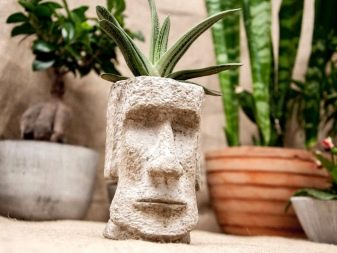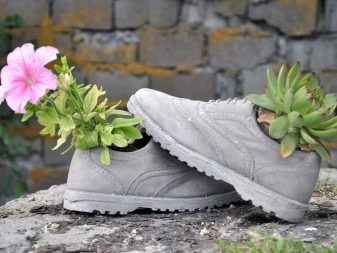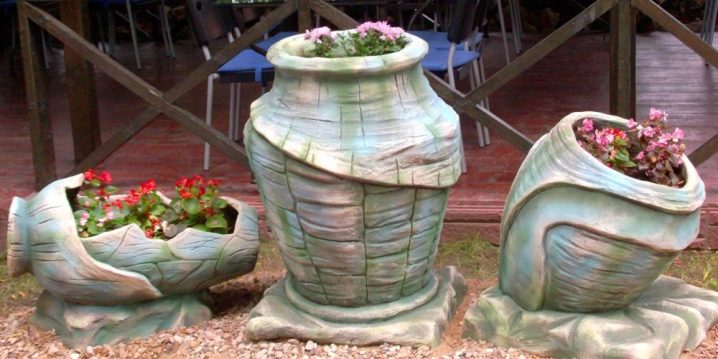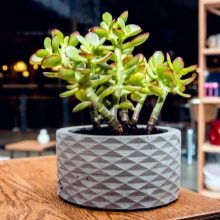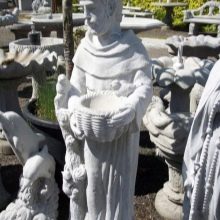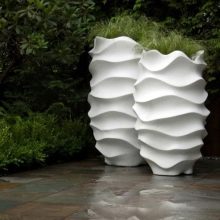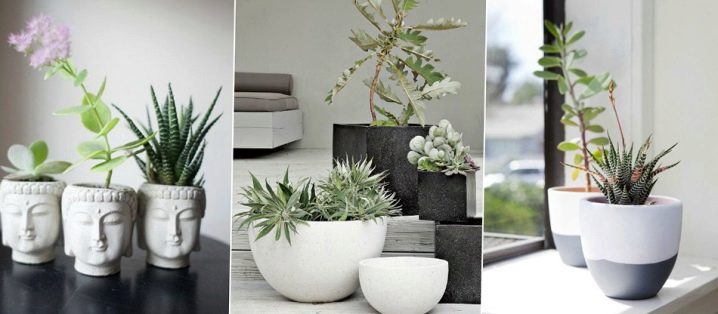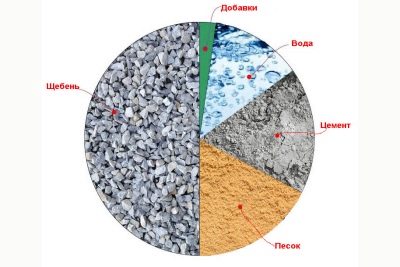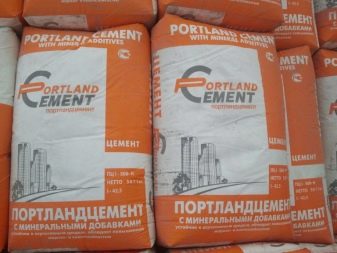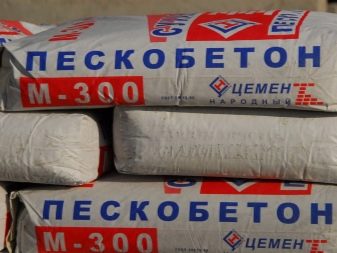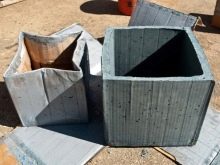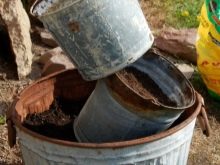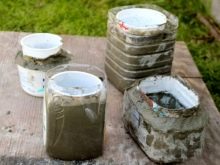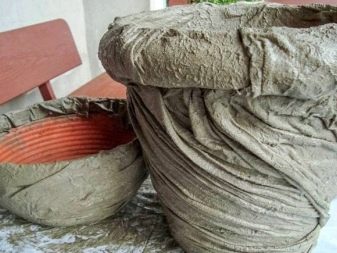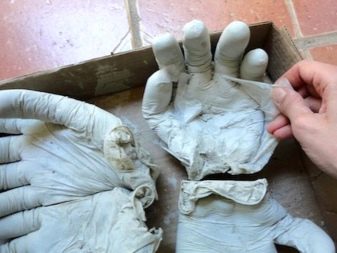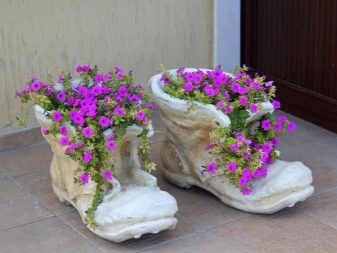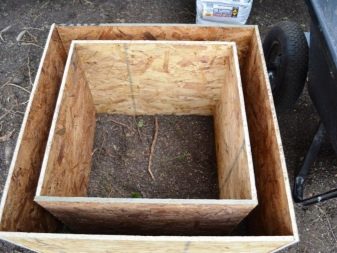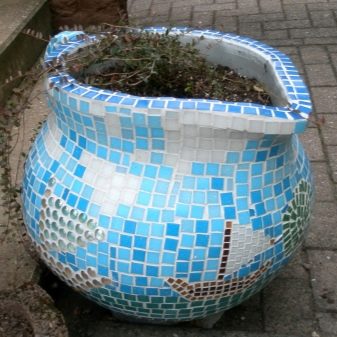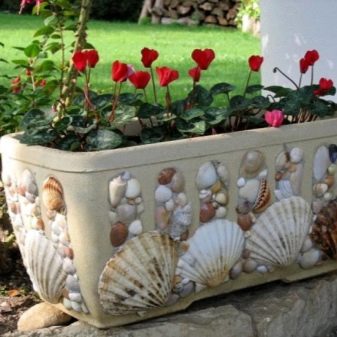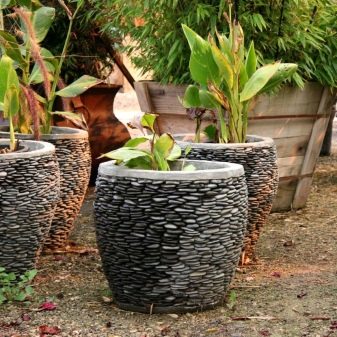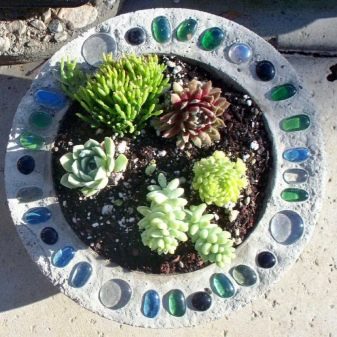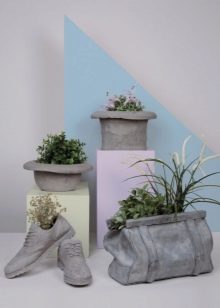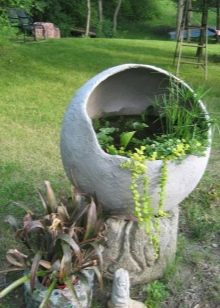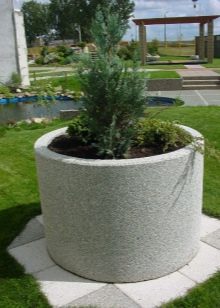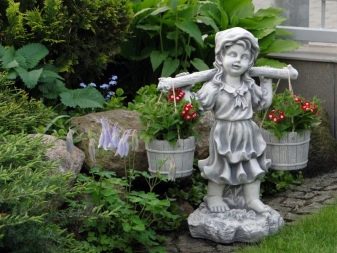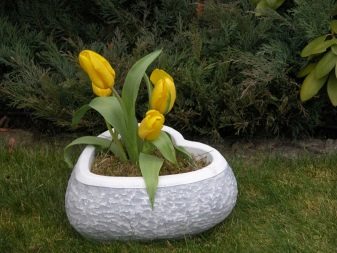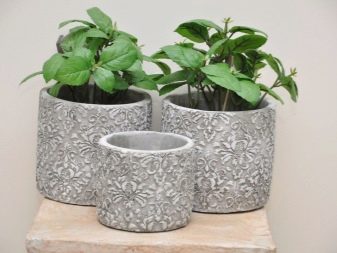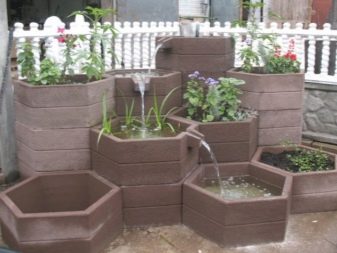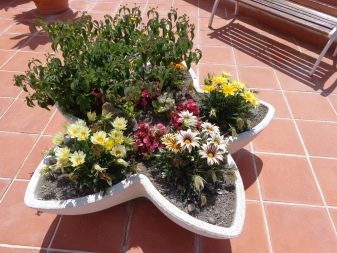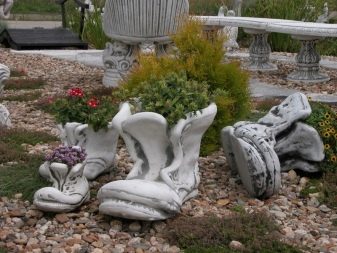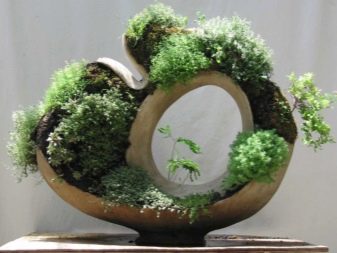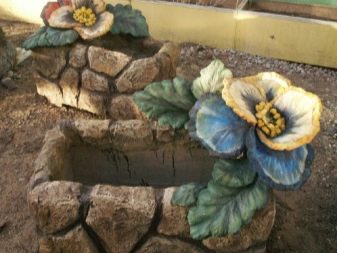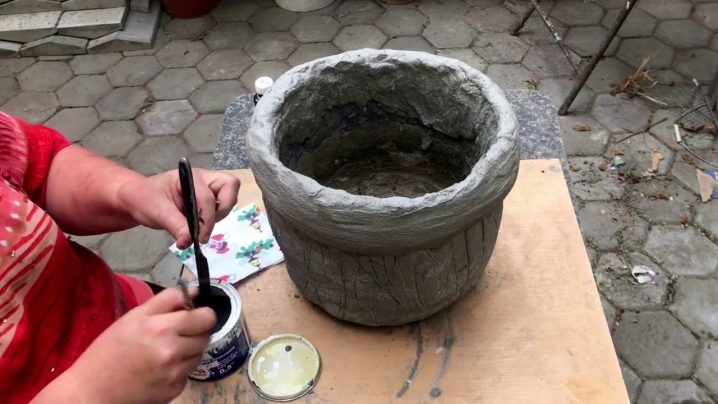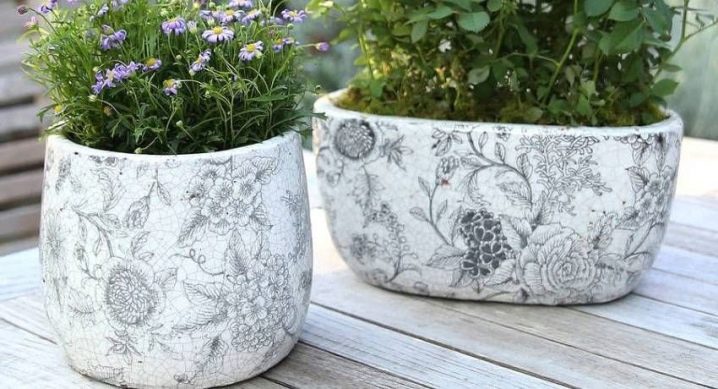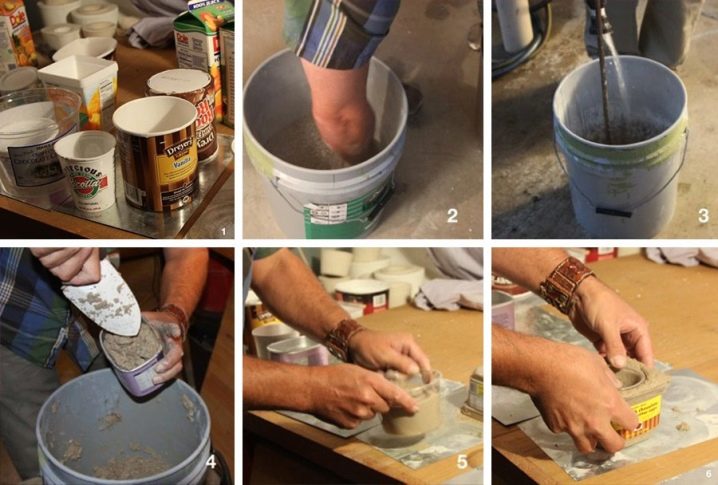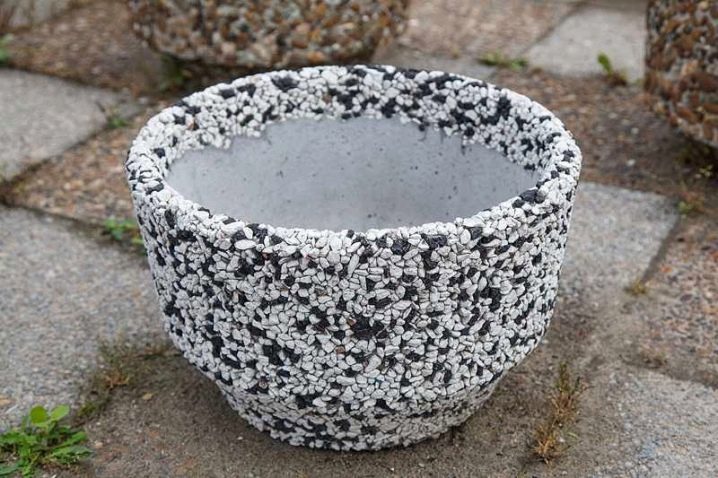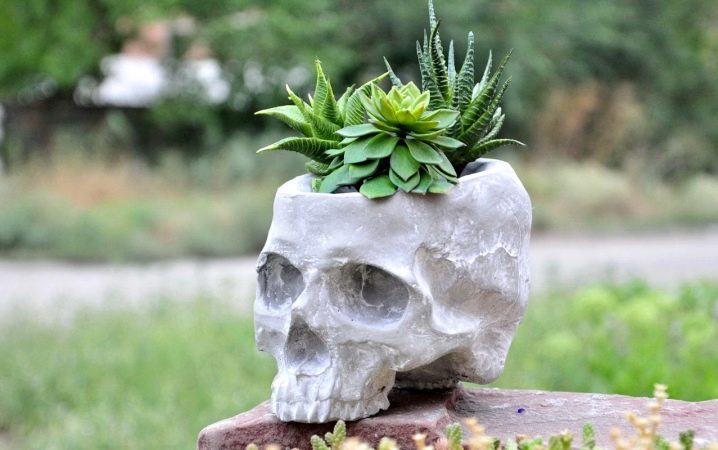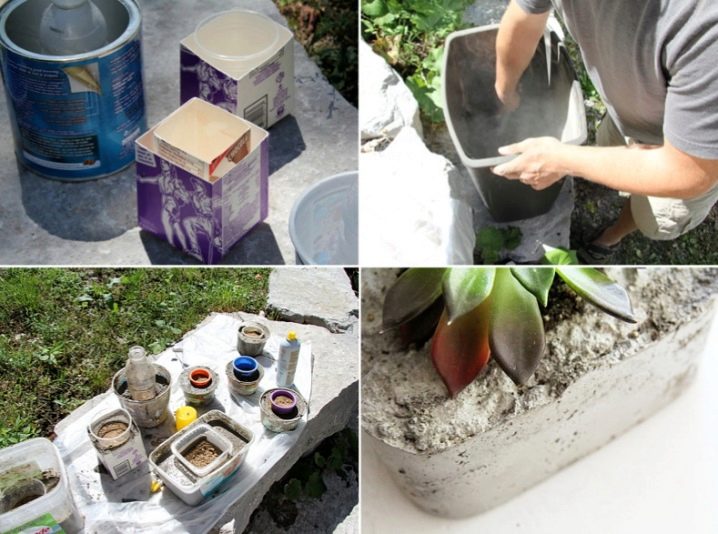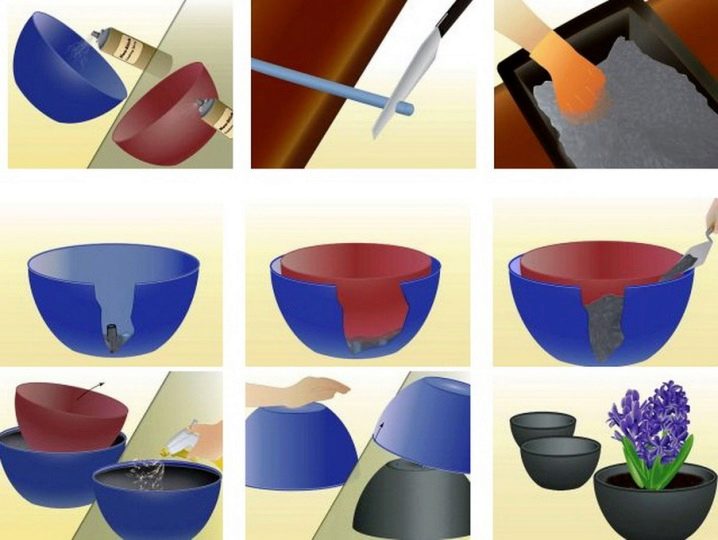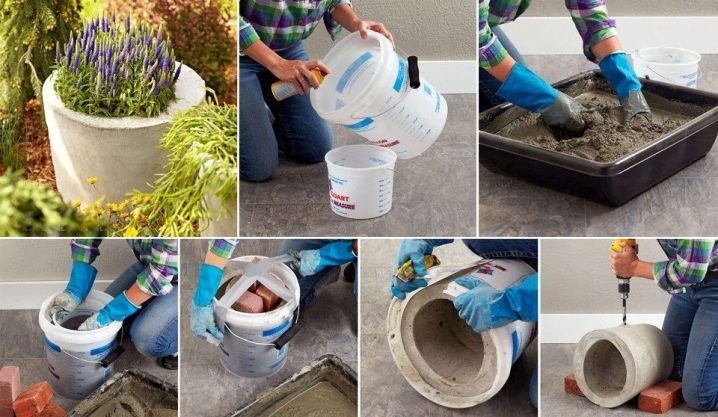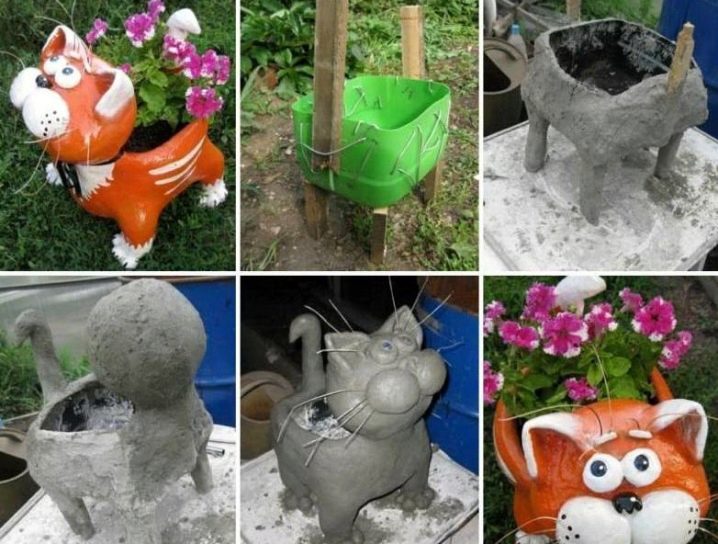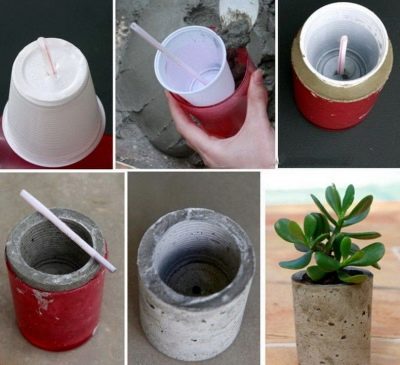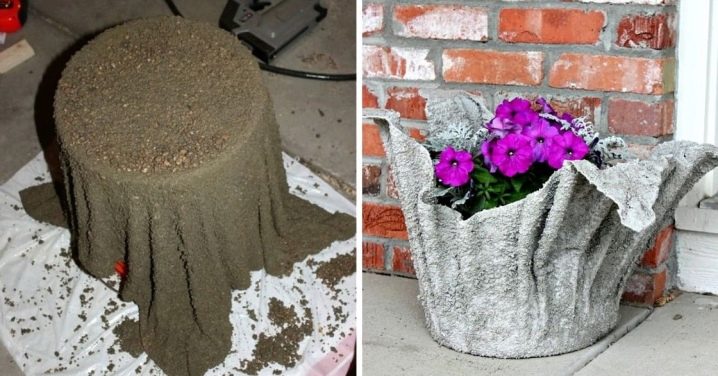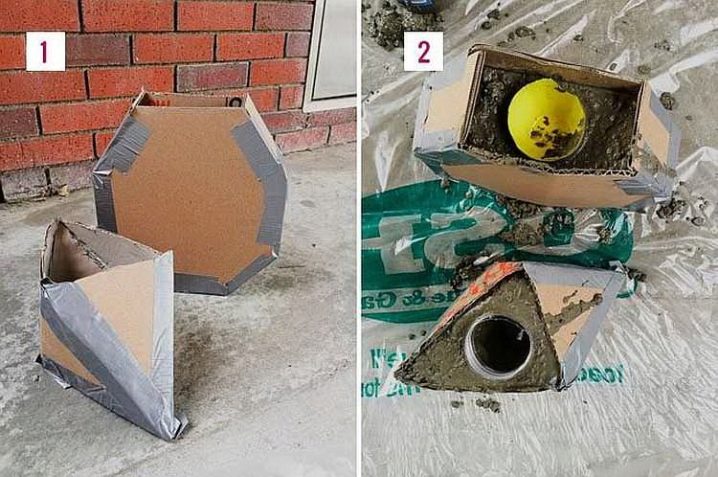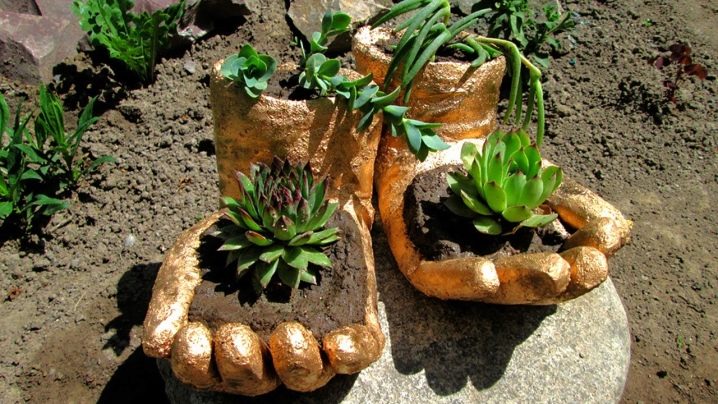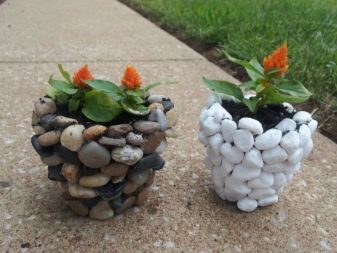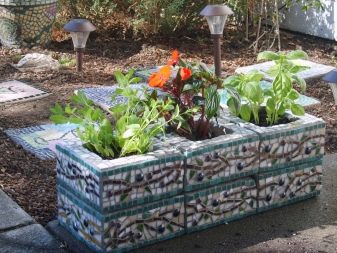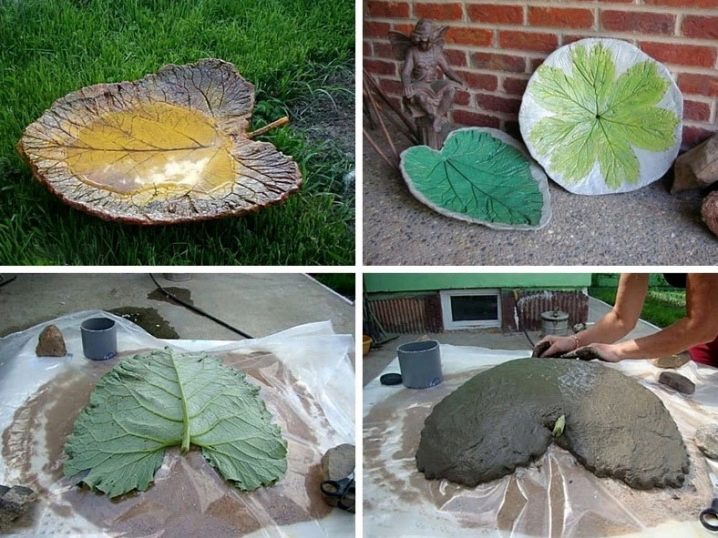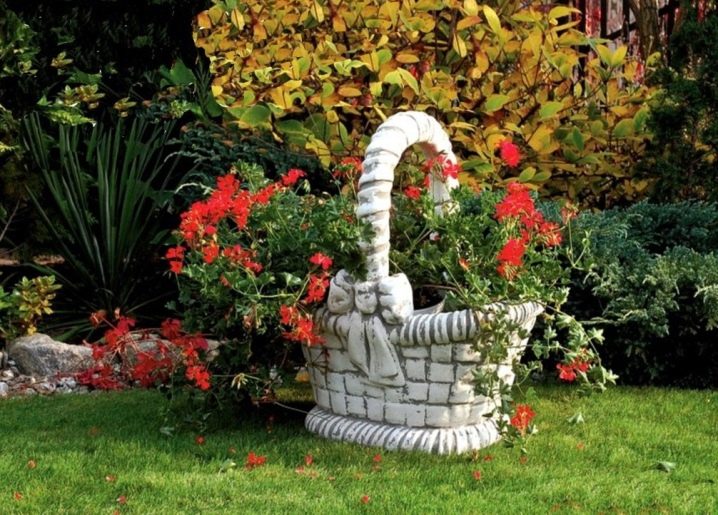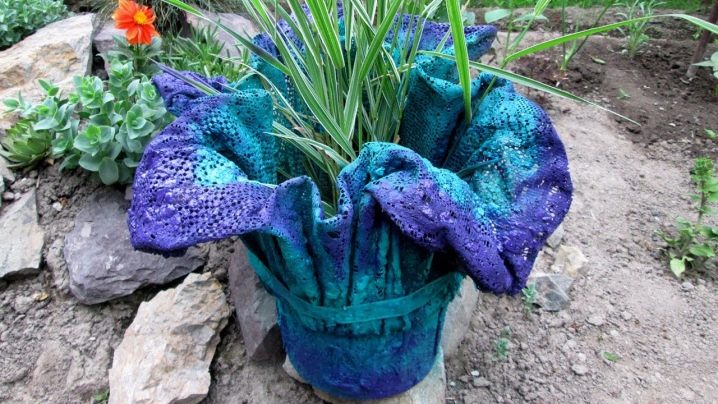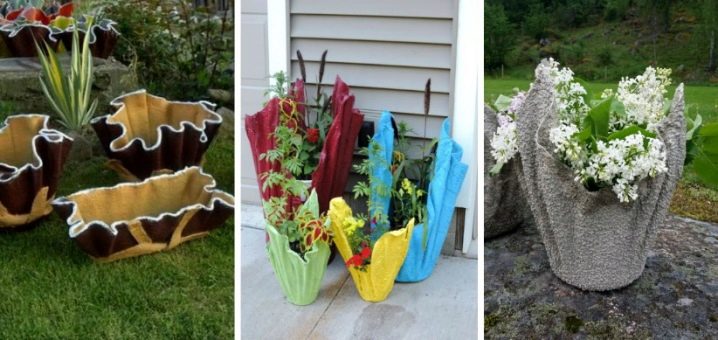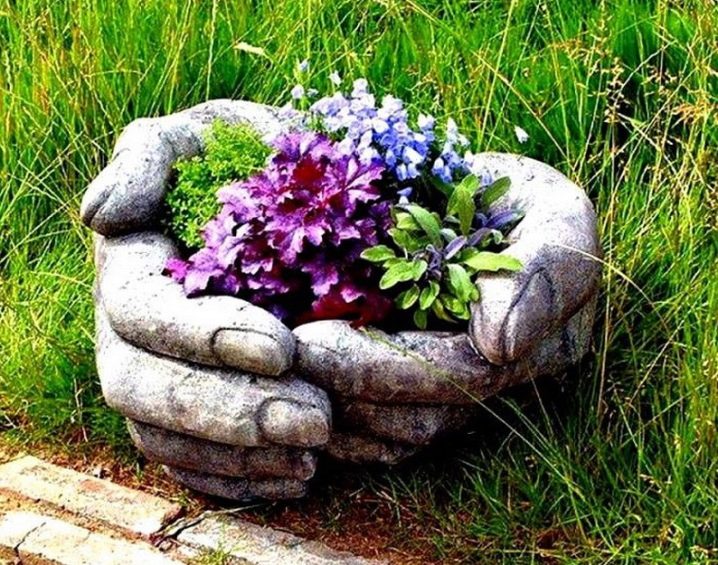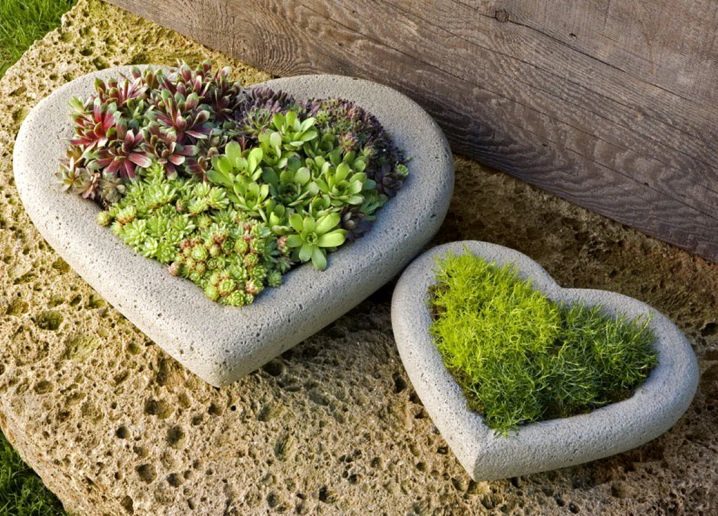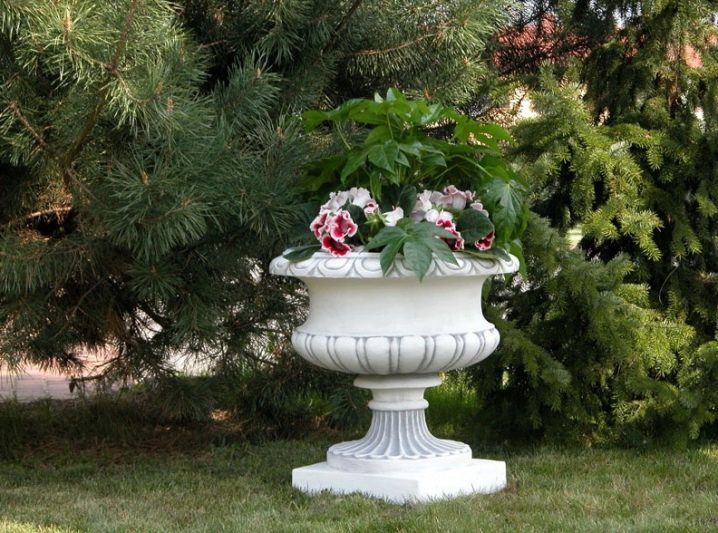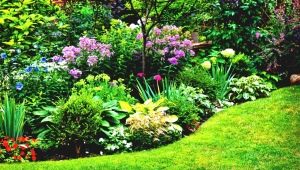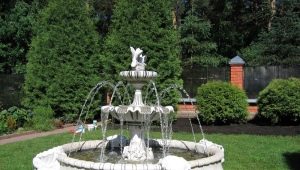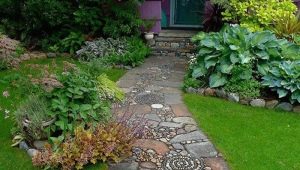How to make a pot of concrete?
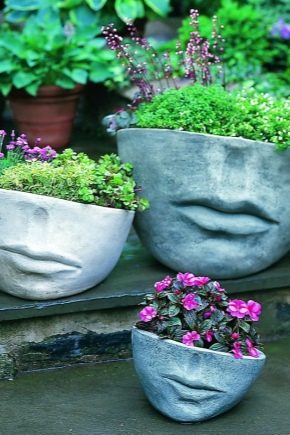
By enriching a plot of a country house or cottage, you can use different methods of landscape design. Some people like rockeries, others just decorate the space with small details. Take at least a pot: filled with flowering plants, it looks unique. At the same time, this product can be done by hand: we understand the intricacies of the process.
Kinds
Concrete pot is a decorative vase of small architectural form, which can be made of different materials. This is a beautiful pot for plants and flowers. It helps gardeners in the cultivation of very sensitive plants, allows each of them to choose the optimal soil composition.Carries a flowerpot and decorative load: by means of it you can place bright accents in the landscape space, emphasizing the uniqueness of the garden.
Existing species are divided into several categories. Vases are:
- street (garden);
- room;
- decorative.
Each type has its own characteristics, although in general the properties of the species are identical: the difference is in the size, the material used in each particular case. For example, florists for giving more often perform medium size.
If the landscape space is large, you can use street varieties for flowers: they are larger, often higher, so plants in them often hang down, creating an indescribable atmosphere of antiquity.
Decorative models are smaller, they are exhibited at the entrance, they are a peculiar component to give the interior the desired atmosphere. Small size options are often moved, so they are mobile. Large models often resemble flower beds, differing by a small depth.
Materials
The main material in the creation of the pot is concrete. This composition consists of:
- rubble;
- sand;
- cement;
- water;
- special additives.
The binding component is Portland cement, which includes the eponymous clinker, gypsum, slag, ash, pozzolana and other mineral inclusions. Other varieties of Portland cement are expanded clay concrete (crushed stone is replaced with expanded clay), or sand concrete (the aggregate sand performs the function of aggregates). Water for mixing the composition can be different: drinking, groundwater, technical, sea (not suitable for reinforced concrete flowerpots).
In addition to the main raw materials, the work uses auxiliary and decorative. The first category includes improvised means by which you can make a pot. These are a variety of items that can be used as a flowerpot form, as well as a load that allows you to achieve the desired thickness of the product. The most interesting and unexpected solutions include:
- large and small empty food boxes;
- used plastic bottles and buckets left over from repairs;
- old pots, buckets, tubs;
- rubber gloves for cleaning (high density);
- wooden boards, cardboard, dishes;
- metal rods, wire;
- old towels, rags or other fabric of rectangular, square, round, oval shape;
- old shoes, children's toys of the right size;
- drawers of furniture that has become unusable.
As a load, mainly small stones are used: due to their size, they perfectly fill the inner part, which is necessary for shaping the pot, as well as being a weight with a small weight. This raw material can be found in any garden or part of a country house. If problems arise with his search, you can use sand, which also differs in weight with a small volume.
If there is no sand on the site, a part of the dry cement composition can be used for work, hermetically packed it in several plastic bags before the working process.
Decorative elements of a concrete vase depend on a stylistic idea. In the classic version, the pot can have no decor at all: a bet can be made on the unusual shape, because the abundance of decor does not always look harmonious with flowers or other plants that will be in the pot. The most interesting raw material for decoration is glass, coins, small colored pebbles, rhinestones, mirror shards, stained glass and paint.
Connoisseurs of creativity use natural materials in their work, conveying a unique texture (for example, green leaves) of a concrete surface.
Sizes and shapes
The shape of the pot today does not comply with any standards. It is not limited in size, a concrete flower vase can be:
- small, resembling an ordinary flower pot;
- medium size, being one of the identical items for the flower arrangement;
- large - a bright accent of the garden plot.
Dimensions at the same time vary from 20 cm and more. Some varieties can reach a length of more than 1 meter, the width can be 60-120 cm.
The shape of the products is divided into the usual classical and non-standard. The first category includes concrete vases of geometric shapes (round, square, rectangular, hexagonal, octahedral, oval varieties).
The second group is not confused with anything - the pots can be represented as:
- silhouette of a fairytale character;
- parts of the sculpture (for example, it may be hands holding flowers);
- pairs of hearts of different sizes;
- openwork stone bowl;
- corrugated vase;
- stars with different numbers of ends and a circular base;
- men's shoe, boot or elegant women's shoes;
- charming kitten, lamb or other animal;
- wicker basket with a long handle;
- iris flower, lotus;
- stylized magic totem.
At the same time, the complexity of creation may lie not in experience, but in the absence of patience. Any product can be made independently at a professional level. The process involves:
- availability of the necessary raw materials, finishes, sketch (for complex models);
- preparation of solution of the necessary consistence;
- process technology compliance;
- keeping the allotted time for drying the concrete base;
- shape adjustment (for variants of washed concrete);
- decorating or painting a flowerpot.
Necessary tools and mixes
For the work process, which is carried out in the summer, you will need not so many materials, if you decide in advance on the appearance, think over the raw materials, decor and frame. Depending on the specific case, cement, sand or ready mix are used. Water and composition should always be at hand: sometimes the composition is dense, so it needs to be brought to the desired consistency.
. In other cases, the mass should not spread, it is necessary for models that perform like sculptural modeling.
If the sand is not uniform, a special sieve may be needed to work. Cement is preferable to choose at least M – 400. This composition fits well, will not cause difficulties in the process. In addition to it, you may need:
- polyethylene film;
- frame raw materials (what will serve as the basis or form);
- ready-made stencils, anti-stencils;
- gloves, spatula;
- metal pipe (for drainage);
- capacity for mixing concrete;
- non-stick spray (grease VD-40 or engine oil);
- paints and brushes, as well as a knife for cutting and adjusting the pattern.
Some homemade craftsmen start up even tiled glue left over after laying wall or floor tiles. Due to ideally balanced proportions and uniformity, such material is perfectly mixed with other components, without forming lumps.
Each one chooses the finish independently: one is enough to decorate the surface with stones of different shapes, leaving the dominant place of decor for vibrant colors.Others are starting work to demonstrate design skills, decorating the surface with carvings, for example, in Indian themes. In this case, the plants in this tandem look no less stylish.
How to: step-by-step master class
Whatever model you have conceived, the technology of its manufacture will follow approximately the same processes. The difference may be in the number of steps: the more complex the product, the greater the number. This is especially true for products that require sculpting. To analyze the essence of the work, consider the general technology, and then several options for making a stylish pot of concrete. This will make it possible to understand why the steps in the master classes are different.
The solution is kneaded in consistency, as for laying tiles: the mass does not spread, while it is not thick. If the composition is planned to be impregnated, it must be more liquid, otherwise it will not be able to completely saturate the desired shape. More often to give the desired shape using two containers. One of them is filled with mortar, another is inserted into the mortar and filled with oppression (heavy objects, sand) so that the concrete rises along the edges of the original form.
So that the cement can be separated from the main form, a large container, chosen as the basis, is treated inside with grease. For this purpose, you can use plastic wrap, but it is not always possible to perfectly straighten it, so the production flaws can be visible on the finished product. The second form is treated with lubricant from the outside (in the place where it comes into contact with the solution). The general instruction is as follows:
- concrete material is poured to the bottom of more capacity, while the thickness of the layer on average should be 3-4 cm;
- if necessary, level the bottom layer with a spatula - then it will not work;
- for drainage they insert a metal pipe cut into small pieces, which has been lubricated from the outside;
- a smaller form is installed on the metal segments, filled with sand or other weight (gravel, rubble) prepared in advance;
- after fixing the second container, the concrete solution is poured between the forms, not forgetting to pierce it with a thin metal rod (so that no air bubbles remain in it);
- trim the upper edge of the future pot with a spatula or a regular spoon;
- the workpiece is covered with polyethylene and left for at least a day (until complete drying);
- after drying, remove all unnecessary elements (if necessary, they are broken, if the structure has a metal frame, auxiliary parts are carefully removed);
- flower girls are immersed in water for 1 week (large products are plentifully sprayed with water 4 times a day and covered with a film, repeating for 10–14 days);
- after the desired time, the pots will be decorated and painted.
If inserts are planned to the surface (for example, pieces of a mirror or stones), they are pressed into the material when the concrete is still malleable. The same applies to stencils: it is necessary to press down the form at the time of concrete hardening.
Walk briefly for different types of manufacturing.
Pot-sculpture
To make a charming flower pot, you will need 6 wooden poles (you can use the legs from old stools) and a plastic tank for the body. The supports are fixed to the container by means of aluminum wire, making 4 paws of 4, of the remaining two, the tail and head. Then the inner space of the pot is trimmed with concrete, the outside is sculptured.For the head, you can use any object of a round shape.
They work with the material gradually, otherwise the mass runs the risk of falling off the base. When the solution hardens, the surface needs to be sanded. Then it is necessary to paint the shape in the color you like, giving the cat an original coloring. You can cover the product with top varnish.
From plastic containers
This method is the simplest. Used 5-liter bottles are cut to the desired height, then the concrete is poured to the bottom. Inside, they often insert a round shape, following the basic technology, filling it with sand in a bag or gravel. Some pots when cured have a finished embossed pattern in the form of transverse strips left by the shape of a larger container. Others look original, differing curly shape edge.
From fabric
No less simple for the manufacture of a pot of textiles or old towels. To create it you will need a mixing container, cloth, bucket and support. Everything is very simple here: the fabric is dipped into the concrete solution until it is completely impregnated, then it is hung on a bucket, put on a support. If necessary, you can immediately correct the edges of the future flowerpot, cutting them, or bent to the sides, like flower petals, when the solution starts to harden.
There may be a lot of options for fabrics, as well as the structure of the material: the pot can turn out to be airy, openwork.
If you use towels, the picture will have original relief. You can soak different things with concrete. For example, it can be a plain woven bag with ties, a scarf, or old jeans.
Some people like paper (for example, the shape of the box): this material takes on the original texture after hardening the solution. Its production does not differ from the basic technology. And you can vary the form itself: the box may have concave, convex side faces, or asymmetry. The main rule of all materials is free access to the removal of used devices.otherwise it will be problematic to separate the blank from the base.
Finish
The decoration of a concrete flowerpot is a creative and fascinating process. Little to fulfill the form: it needs to give an attractive appearance. For this, concrete is often washed out, giving the surface a unique texture. Another technique of finishing is the interspersing of different materials. The design can be very diverse: painting the product in bronze or gilding will give the product a vintage tint.The white surface type will successfully fit into the garden interior, in which there are statues, or will be an independent accent of the plot.
Such products are not decorated with the use of glue: under the influence of rain, snow and wind, the decor quickly moves away from the surface of the pot. Sometimes, while the concrete dries out, it is sprinkled on top of it with sand with a non-uniform structure, giving the surface a roughness and an interesting texture. After painting such a pot will look stylish and unusual. Often in the design include sinks, although with this material you need to be very careful, otherwise the shells can crack.
Broken crockery of different colors is also a stylish solution: this pot will look unique, especially if it is part of a similar flower arrangement.
An interesting solution to the decoration will be the preparation of leaves of concrete in the tone of the main product. This decor can be placed around the pot, or they run the track, decorate rockeries. Mass options: it all depends on taste preferences and available free time for the implementation of the idea. In the composition, you can include stones near the pot.
It is not recommended to finish such accessories with ribbons after the solution dries: this will simplify the appearance.
Beautiful examples and options
To visually see how different concrete pots can be, It is worth looking at examples of the presented photo gallery:
- the wicker basket design looks soft and light: this pot, the frame of which is the basket itself, impregnated with cement composition and painted with white paint, will bring the atmosphere of antiquity into the landscape design;
- a beautiful tender blue flower, tied with a ribbon, made of lace fabric and dyed with a transition to blue color, is a decoration of the garden: for the full composition it needs leafy plants;
- from several towels, you can create a composition of flowerpots, making models of different shapes, giving them integrity through the identical color of the surface inside and outside;
- an unusual flowerpot-shoe from an old shoe does not need additional decoration due to its unusual shape and abundance of fine details, it is self-sufficient and original, great for small medium-sized inflorescences;
- Possessing artistic skills, you can make a pot-hand by fashioning a shape based on a round-shaped frame: decorated with flowers, it will look touching and unusual;
- laconic hearts that are with each other fit perfectly into the style of the garden plot: they can be placed near the terrace to be able to admire them more often;
- Concrete vase-bowl will be a decoration of the garden: the original pattern, applied through a stencil, will give the product uniqueness and allow you to make the design as professional as possible.
To learn how to make your own pot of concrete, see the following video.
